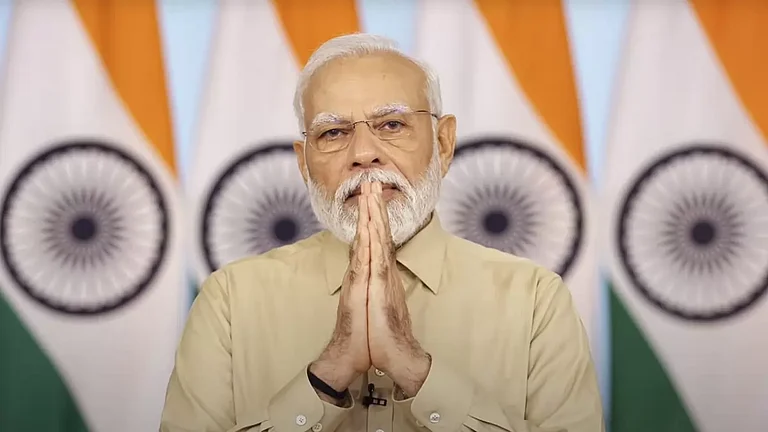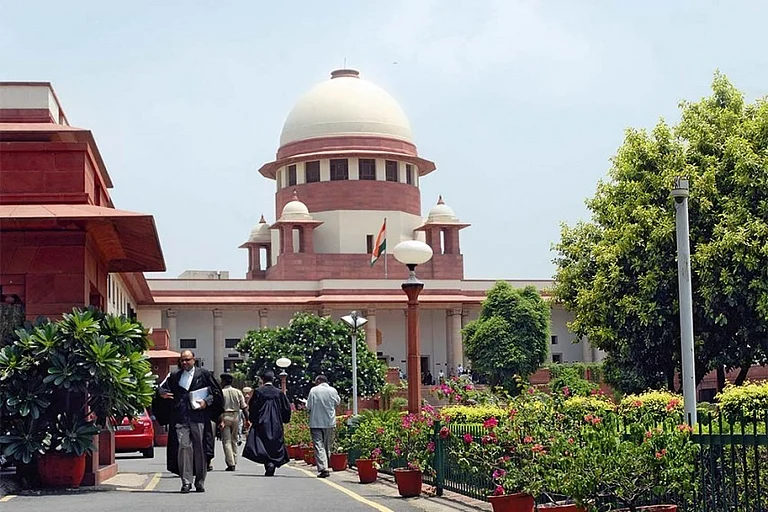
Govt unveils Sudarshan Chakra Mission with focus on self-reliance, predictive tech, and precision counter-systems.
Operation Sindoor showcased India’s “new normal” of strong, decisive responses to cross-border terrorism.
Defence spending, indigenous production, and exports hit record highs, reflecting a shift towards strength and self-reliance.
The government said on Wednesday that India's futuristic defence program, Sudarshan Chakra Mission, has three main objectives: developing precise, targeted systems for counter-action and using "predictive technologies" to anticipate future conflict scenarios.
Titled 'Transformation of India's Defence and Internal Security Posture,' the Press Information Bureau (PIB) released some data and a review of key defence-related developments during the previous 11 years on Wednesday, providing a general overview of the nation's security situation.
"Unlike in the past, India under the present government has become a global force to reckon with, a nation that speaks on issues from a position of strength," it says.
PTI reported that India's "firm and clear approach towards cross-border terrorism" is reflected in the country's action pattern during the past ten years, the administration stated.
Operation Sindoor, the most recent and pivotal operation, took place in May 2025. The summary claims that "India gave its armed forces full freedom of action" in reaction to the deaths of people in Pahalgam.
They targeted nine terrorist camps in Pakistan and Pakistan-occupied Kashmir with precision munitions and drones. Over 100 terrorists were killed, including those connected to the Pulwama incident and the IC814 hijacking. It further states that Indian counter-drone systems destroyed Pakistan's attempts at retaliation drone and missile strikes.
Prime Minister Narendra Modi referred to Operation Sindoor as "a new normal" in his 79th Independence Day speech, emphasising that "India will respond with full force whenever terrorism threatens its citizens," according to the description.
In addition to quick fixes, the Modi administration is getting ready for "long-term threats," the ministry stated. Modi had introduced the Sudarshan Chakra Mission, a cutting-edge defence initiative, in his Independence Day speech.
"Its goals are threefold -- to ensure the entire system is researched, developed, and manufactured in India; to anticipate future warfare scenarios through predictive technologies; and to create precise, targeted systems for counter-action. By 2035, the aim is to provide a comprehensive national security shield for both strategic and civilian assets," it says.
According to PTI the statement claimed that under PM Modi's leadership, India's defence and internal security posture has experienced a "profound transformation" over the past eleven years. According to the synopsis, the change has been characterised by "greater clarity of purpose, stronger deterrence, and a sustained drive for self-reliance."
This government has often emphasised that "national security is non-negotiable" and that India will increase its readiness and capability to guarantee this security.
A "more confident, modern, and proactive approach to challenges, both external and internal" is the outcome of this. It contributes.
Firm responses to terrorism, the clear articulation of a new normal with Pakistan and futuristic initiatives like the Sudarshan Chakra Mission underscore a "forward-looking security doctrine," the government asserted.
India's defence and internal security posture under the Modi government reflects a "decisive shift towards strength, clarity, and self-reliance".
With record investments in defence, rapid growth in indigenous production, bold reforms, and the adoption of emerging technologies, India has transitioned from being a major importer to a rising global exporter of defence equipment, it added.
"India's defence expenditure has steadily increased under the present government, rising from Rs 2.53 lakh crore in 2013–14 to Rs 6.81 lakh crore in 2025–26," the PIB synopsis says.
"The focus is no longer only on acquiring weapons but also on building domestic capacity. In 2024–25, defence production touched a record Rs 1.50 lakh crore, more than triple the 2014–15 level," it adds.
The fact that India is currently producing fighter jets, missile systems, artillery systems, warships, naval boats, aircraft carriers, and much more highlights how "self-reliance and deterrence have become the cornerstone of national security," according to the administration.
Over the past ten years, defence exports have increased thirty-four times, reaching Rs 23,622 crore in 2024–2025. According to the report, Indian equipment is being sold to more than 100 countries, including France, Armenia, and the United States.
Additionally, information about indigenisation initiatives was presented in the synopsis. The industry can now locally produce previously imported commodities thanks to the SRIJAN Portal (2020). "To date, over 46,798 items have been listed".
It states that DPSUs' Positive Indigenisation Lists have found 5,012 articles (in five tranches), "signalling a phased ban on imports."
The government claimed that Atmanirbharta is "not confined to defence alone" and that it is the cornerstone of a "resilient and confident India prepared to meet both traditional and non-traditional challenges on its path to becoming a global leader" due to advancements in internal stability, food and energy security, financial inclusion, and technological innovation.
"The government's strong determination to view the nation as Viksit Bharat in all respects in the years to come is reflected in this tectonic shift. Additionally, it reinforces that this government has done and is still doing what it takes to create India "Viksit," rather than just believing in empty words, the statement read.


























